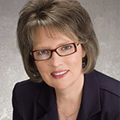A dentist can't close the deal when offering treatment plans.
Dianne offers expert advice.
Dear Dianne,
Over the past year, I've had a significant amount of open time in my schedule. I have approximately 1,000 active patients in the practice, and I take only the two major Preferred Provider Organizations (PPOs) in my area. It seems to me that my biggest problem is when patients do not schedule after I have diagnosed their dental needs. Approximately three months ago, I asked my business assistant to track unscheduled treatment. I'm finding that a significant number of people do not schedule. They will say things like, "Let me check my schedule," or "I just can't do this right now." Do you have any tips to get patients to schedule their needed dentistry?
—Dr. Dave
Dear Dr. Dave,
There are a number of reasons why people choose not to schedule, including busy work schedules, time constraints, or financial issues. Being flexible in scheduling and offering payment options can be helpful.
In some practices there is also a trust issue. Many patients do not automatically trust their dentist, especially if the dentist has not built a relationship by taking a little time to get to know them. I've been in practices where the dentists are quiet introverts by nature. These personality types have to work harder to form connected relationships with patients. Remember, patients do not remember what we say nearly as much as how we make them feel. When patients are treated with warmth and caring by doctors and staff members, trust is the natural result.
The reality is that there is plenty of dental need today, but a patient's willingness to proceed with needed treatment often hinges on the dentist's ability to present needed treatment effectively. There is a difference between a diagnosis and a treatment plan. The presentation needs to be on a level a patient can comprehend, without being technical. It should be interactive, meaning the dentist doesn't do all the talking. And the patient should feel at ease in asking questions.
However, all too often treatment presentations are merely diagnoses that are cast at nervous patients while chairside without much thought on the dentist's part as to the finer points of an effective treatment discussion. Many dentists simply feel they are too busy to spend time developing a treatment plan (much less two treatment plans) or to allot time for a meaningful discussion. They come across as rushed when they say, (1) here's the problem; (2) here's what needs to be done; (3) take it or leave it; (4) my next patient is waiting; (5) you'll have to ask Julie about the cost. Next!
It is not uncommon to see practices with thousands of dollars in diagnosed needs that never get scheduled. One of the reasons is that patients often do not understand their needs. Moreover, why should they endure hours in the dental chair for something that is simply not a priority? Why don't they understand, and why are their dental needs not a priority? It is probably because the treatment was presented "on the fly."
Some dental needs are relatively minor and can be addressed chairside. However, more extensive needs or any dental diagnosis that goes beyond the cost of one crown or several restorations deserves a different approach for presentation. Certainly extensive needs require thoughtful consideration about available options. Scheduling a complimentary treatment discussion (not in an operatory) is the best way to help people understand what they need and why.
I've given you several considerations to ponder. When you learn why patients are not scheduling, you will be in a good position to fix your problem. Don't be afraid to ask for help.
All the best,
Dianne
READ LAST MONTH'S COLUMN: Performance appraisals
Dianne Glasscoe Watterson, MBA, is a consultant, speaker, and author. She helps good practices become better through practical on-site consulting. Visit Dianne's website at wattersonspeaks.com. For consulting or speaking inquiries, contact Dianne at [email protected] or call her at (336) 472-3515.
About the Author

Dianne Glasscoe Watterson, MBA
Speaker, author, and consultant
Dianne Glasscoe Watterson, MBA, is a consultant, speaker, and author. She helps good practices become better through practical on-site consulting. Visit Dianne's website at wattersonspeaks.com. For consulting or speaking inquiries, contact Dianne at [email protected] or call her at (336) 472-3515.
Updated April 29, 2016

